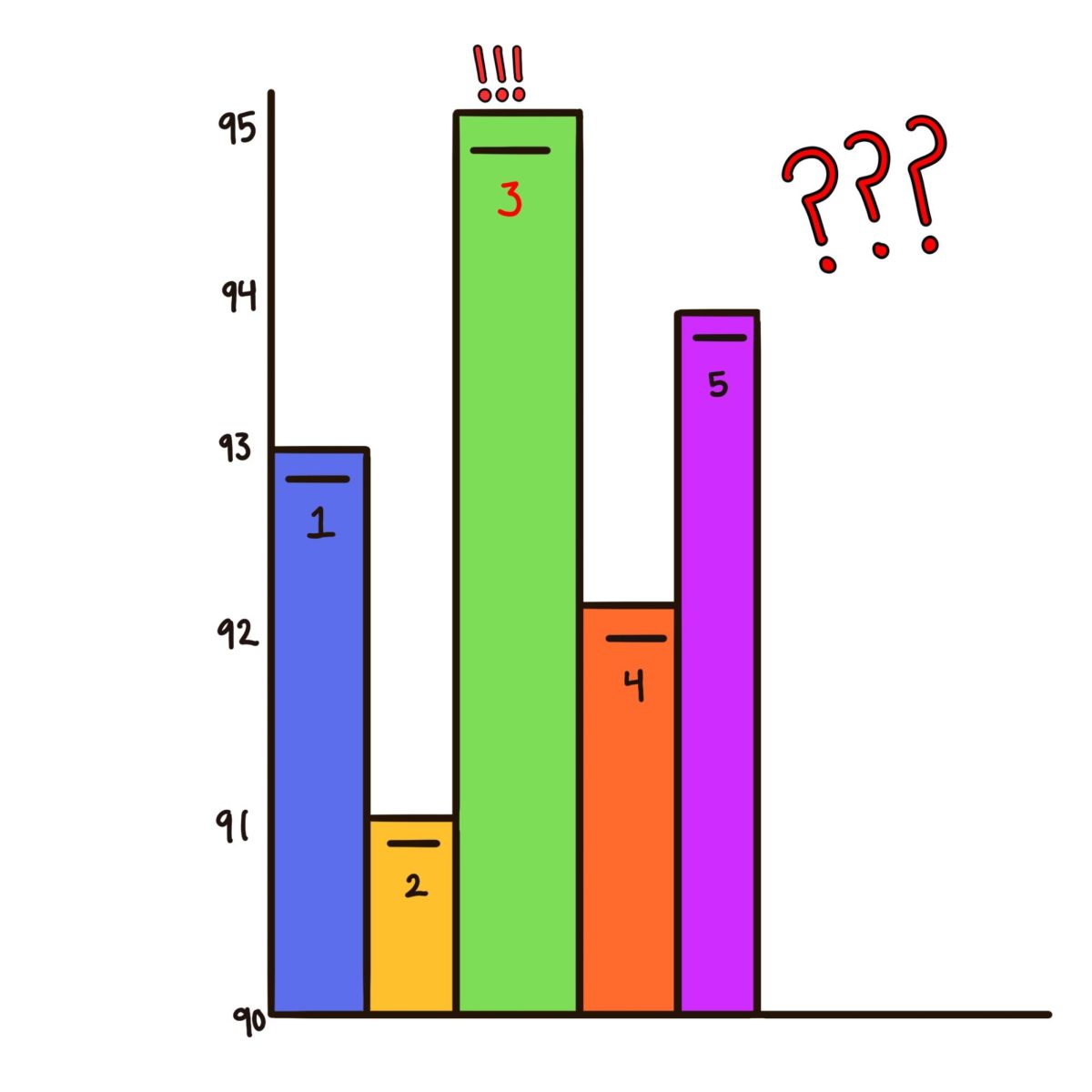Statistics are used in almost every scientific article to persuade readers to agree with certain claims. This can be a double-edged sword, however, as people are unaware of the rampant distortion of statistics that misleadingly are used to convince them to believe one argument or another.
Statistics Teacher Margaret Schmitten responded with a decisive “yes” when asked whether skewed statistics are a serious problem in the media. “One of the things we talk about in stats is bad statistics and how you can manipulate data to sing any song you want, and we sure do see that in the media,” said Schmitten. News publications cherry-pick data to support their agendas, whatever they might be. As a result, many of the so-called statistics fed to audiences are one-sided and often don’t show the whole picture.
This deceit can have repercussions. “Distorted stats spread misinformation… that’s their whole job, to distort and mislead you into thinking about something incorrectly, causing people to make bad decisions based on bad information,” said Schmitten. These bad decisions can have tremendous consequences on people’s health, public policy opinions, and more, depending on what misinformation is spread.
One of the most popular ways the media distorts statistics is by trying to display a larger percentage gap by starting a graph right where the gap begins. This makes a difference in data, which appears to be much more significant than it may be in reality. Another way that statistics can be influenced and distort reality is by using small, unrepresentative samples in studies (statisticshowto.com). These studies are then used to make generalisations about a larger population. “I saw a guy on TV who said, ‘Just pick the study that works best for you.’ No, that’s not how that works. Look at multiple formats, not just down a rabbit hole. Replication is really important in statistics,” said Schmitten. She emphasised the importance of not just finding anything that will support your preconceived viewpoint but also conducting your own research and double-checking its validity with others.
Agreeing, Senior Alejandro Flores said, “I’ve seen a lot of bad statistics from politics dominating the media, and I think it makes the country a lot more ignorant. Getting all of your information from the media alone makes it easy to get misled.” Nowadays, the political agendas of news organisations call into question what should be their number one priority, reporting news.. When a news source has a bias for one side of the spectrum, it is never a good idea to gain information solely from that outlet.
“I like to research a topic and look at more reputable sources, so I am sure the information I get isn’t influenced by one side or the other,” said Flores. It is a wise decision to take time and double-check information with unbiased publications. In addition, Schmitten thinks this can go a step further. “Taking a stats class is one of the most powerful things people can do,” said Schmitten. The class teaches students to analyse statistics and understand how to spot stats that have been skewed in one way or the other. “At the beginning of the school year, we talked about how you should gather data to avoid bias, and it seems like in today’s world, there’s a goal to gather data to endorse people’s biases,” said Schmitten. This helps readers to spot biased studies and better determine what to trust.
The manipulation of statistics has been, and will continue to be, a huge issue in our society unless we take action to educate ourselves. Whether it be cherry-picked data, inflating percentages, or unrepresentative sample sizes, these ploys have hazardous consequences for people’s decision making. Thinking critically about what news to trust and looking at independent research is imperative to discover the truth in an age filled with numerous lies.

